Young and straightforward, like its grapes. It communicates its desire to be free from everything. No drying, no aging in wood and no filtration.
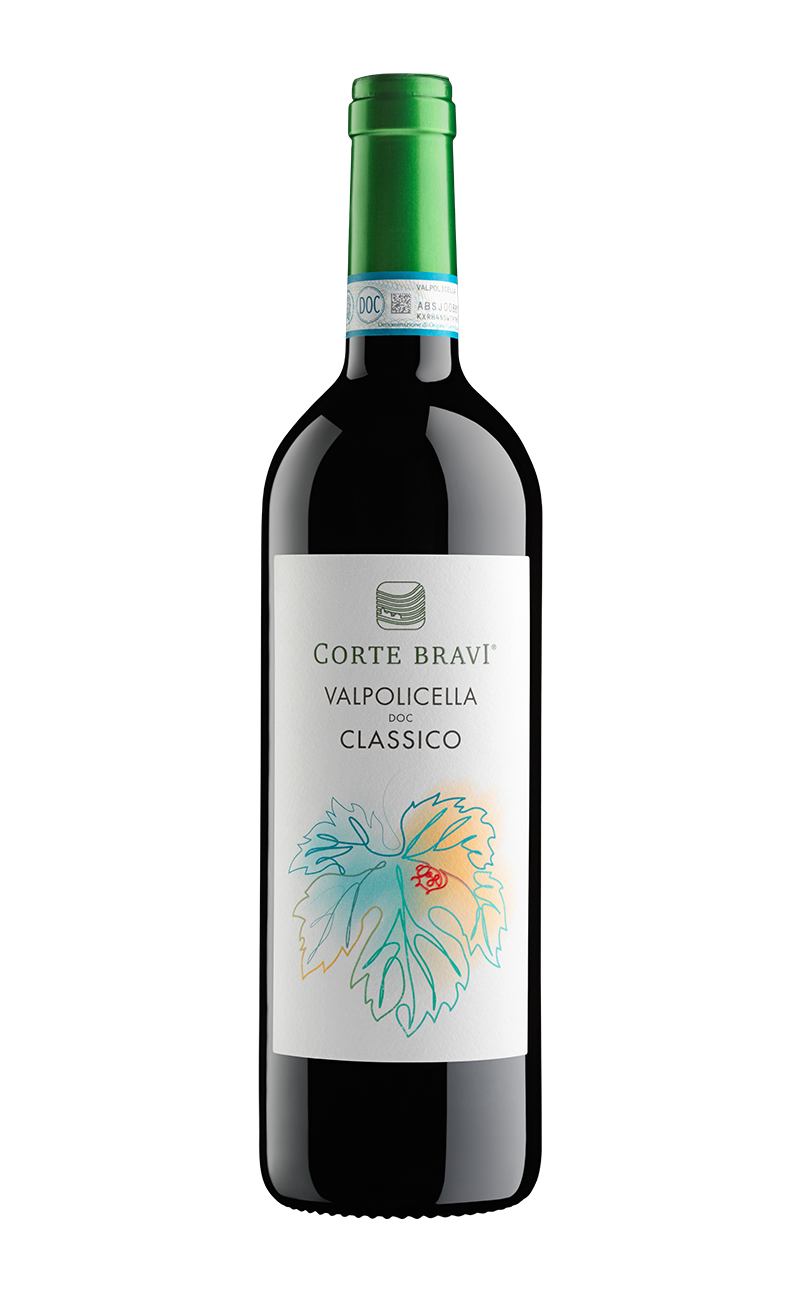
DOC Classico
Valpolicella Classico
DownloadClassification
DOC Valpolicella Classico Biologico (Organic)
Vintage
2023
Vineyards
Our own vineyards cultivated with the “pergola Veronese” growing system, with organic methods. Southern exposure.
Age of the vines
15/20 years
Production area
Gargagnago locality, Sant’Ambrogio di Valpolicella (Verona) 200 m a.s.l.
Type of soil
Mainly limestone.
Grapes
50% Corvinone, 35% Corvina and 15% Rondinella.
Yeld
90 quintals per hectare. Every 100 kg of grapes produces 65 – 70 litres of wine.
Vinification and aging
The red grapes are hand – picked, selected and immediately pressed. Fermentation takes place spontaneously in steel tanks without the use of synthetic chemicals and with only temperature control. Aging in steel and in amphora for about 6 months, spontaneous malolactic fermentation. Bottled without filtration and aged in bottle for at least 2 months.
Yeasts
Indigenous local yeasts.
Filtration
None.
Total sulphites in bottle
Less than 30 mg/l
Alcohol
12,5% vol.
Total acidity
5.4 g / l
Residual sugar
0.6 g / l
Ideal pairing
it is an easy wine, for the whole meal, ideal with many traditional Italian dishes, such as salami appetizers, pasta with simple sauces such as pesto and with fish, especially cod.
Serving temperature
12-15° C
Organoleptic description
The colour is a lively ruby red, with amaranth nuances. On the nose emerge scents of strawberry and cherry, with notes of raspberry. In the mouth the red fruits meet the expectations of the aromas. Sapidity and crispness make it a pleasant wine, suitable for many occasions.
DOC Classico Superiore
DOC Valpolicella Classico Superiore
Downloadthe red grapes are harvested by hand, left to mature for a longer time on the plant. Once pressed, they are cold macerated and then fermentation start spontaneously. This is followed by a maceration that lasts at least 1 month and serves to extract all the aromas and fragrances of Oseleta, a fine grape, native to Valpolicella. The wine is left to rest, half for at least 12 months in French oak barrels and the other half in the big amphora. It is then bottled without filtration in order to continue its refinement in the bottle for about 1 year.
Classification
DOC Valpolicella Classico Superiore Biologico (Organic)
Vintage
2022
Vineyards
Our own vineyards cultivated with the “pergola Veronese” growing system, with organic methods. Southern exposure.
Age of the vines
20/30 years
Production area
Gargagnago locality, Sant’Ambrogio di Valpolicella (Verona) 200 m a.s.l.
Type of soil
Mainly limestone
Grapes
15%Oseleta, 40% Corvinone, 45% Corvina and 5% Rondinella
Yeld
90 quintals per hectare. Every 100 kg of grapes produces 55 – 60 litres of wine.
Vinification and aging
The red grapes are harvested by hand, left to mature for a longer time on the plant. Once pressed, they are cold macerated and then fermentation starts spontaneously. This is followed by a hot maceration that lasts at least 1 month and serves to extract all the aromas and fragrances of Oseleta, a fine grape, native to Valpolicella. The wine is left to rest, half for at least 12 months in French oak barrels and the other half in steel tanks. It is then bottled without filtration in order to continue its refinement in the bottle for about 1 year.
Yeasts
Indigenous local yeasts.
Filtration
None.
Total sulphites in bottle
Less than 30 mg/l.
Alcohol
13,5% vol.
Total acidity
5.8 g / l
Residual sugar
0.6 g / l
Ideal pairing
Wine with structure and body. It is Ideal combined with grilled red meats, savoury game or aged cheeses such as Monte Veronese or Pecorino which together enhance the aromas and flavours.
Serving temperature
15 – 18° C
Organoleptic description
Intense ruby red colour with purple hues,notes of spices and ripe red fruit emerge on the nose, such as plums, blackberries and currants. In the mouth it is soft and persuasive. The red fruits re-emerge and the delicate tannins lead to a good persistence.
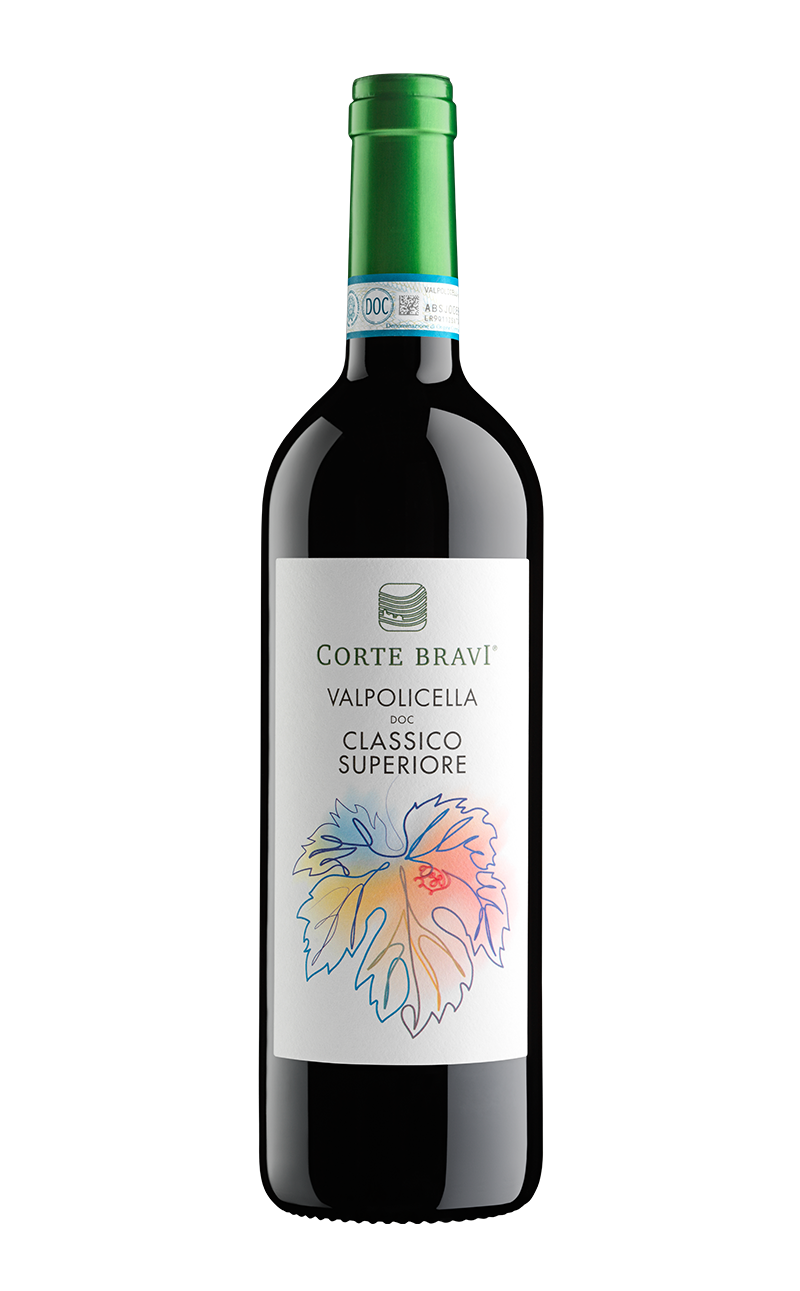
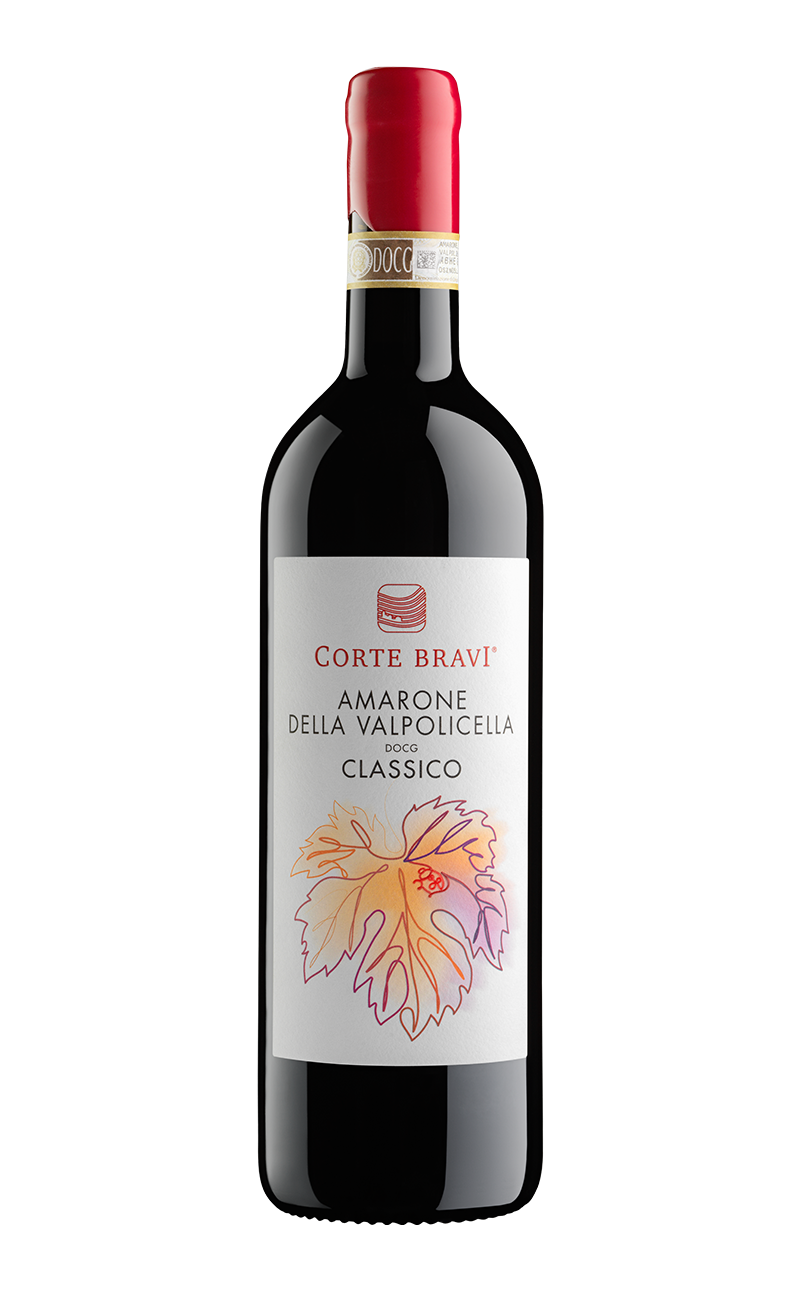
DOCG Classico
Amarone della Valpolicella Classico
DownloadFew bottles of a wine made with the best grapes dried in wooden boxes. A long aging in casks then leads to power, elegance and strong expressiveness. Here is the essence of our territory.
Classification
DOCG Amarone della Valpolicella Classico
Vintage
2019
Vineyards
Our own vineyards cultivated with the “pergola Veronese” growing system, with organic methods. Southern exposure.
Age of the vines
30 years
Production area
Gargagnago locality, Sant’Ambrogio di Valpolicella (Verona) 200 m a.s.l.
Type of soil
Mainly limestone.
Grapes
40% Corvinone, 40% Corvina, 15% Molinara and 5% Rondinella
Vinification and aging
The red grapes are harvested by hand, already selected from the plant to be placed in wooden boxes to dry for 3 months. Once pressed, they are left to cold macerate for ten days and then a spontaneous fermentation is started. Subsequently, a second hot maceration is carried out in order to extract the essence of these grapes to the maximum. Left to rest for 3 years in French oak barrels, it is then bottled without any filtration, to then continue its refinement in the bottle for at least a year.
Yeasts
Indigenous local yeasts
Filtration
None.
Total sulphites in bottle
Less than 50 mg/l.
Alcohol
16% vol.
Total acidity
6.3 g / l
Residual sugar
0.9 g / l
Ideal pairing
Excellent for an important dinner, or for an important moment. It goes well with fine red meats, stews, especially goulash, and very aged cheeses such as caciocavallo. It can also be appreciated on its own, as a meditation wine, at the end of an evening.
Serving temperature
18° C
Organoleptic description
Ruby red colour with garnet reflections, dried plums and cherries in alcohol emerge on the nose, wrapped in the scent of spices and notes of chocolate. In the mouth it is persistent, intense, enveloping, with a soft and elegant tannin.
DOCG Classico Organic Wine
Tenero
DownloadThe emblematic wine of the territory from which it comes.
It fully reflects our farming tradition, made up of small daily gestures, passion and joy in tending our land to obtain this joyful and elegant wine, capable of giving unforgettable sensations.
Classification
Recioto della Valpolicella DOCG Classico Organic Wine
Vintage
2021
Vineyards
Our own vineyards cultivated with the “pergola Veronese” growing system, with organic methods. Southern exposure.
Age of the vines
30 years
Production area
Gargagnago locality, Sant’Ambrogio di Valpolicella (Verona) 200 m
Type of soil
Mainly limestone
Grapes
40% Corvinone, 40% Corvina,10% Molinara Rossa, 10% Rondinella
Yeld
90 quintals for hectare. We select about 20% for drying. Every 100 kg of grapes produces 35 – 40 litres of wine.
Vinification and aging
Hand-picked red grapes, selected in the vineyard to be dried for four months in wooden crates. Once crushed, they are cold macerated for ten days and then spontaneously start fermentation with indigenous yeasts. It is then racked several times to stop fermentation and obtain a sweet wine. Matured for two years in French oak barrels, it is then bottled to continue its ageing process.
Yeasts
Indigenous local yeasts.
Total sulphites in bottle
Less than 50mg/lt
Alcohol
15,5 % vol.
Total acidity
6.3 g/l
Residual sugar
46 g/l
Ideal pairing
Dry sweets, soft cheeses and very fatty cold cuts.
Serving temperature
18° C
Organoleptic description
The nose is fruity, intense, with notes of black cherry, red berries and hints of violets, spices such as cinnamon and cocoa. The palate is sweet, balanced, fresh, with a slight savoury note.
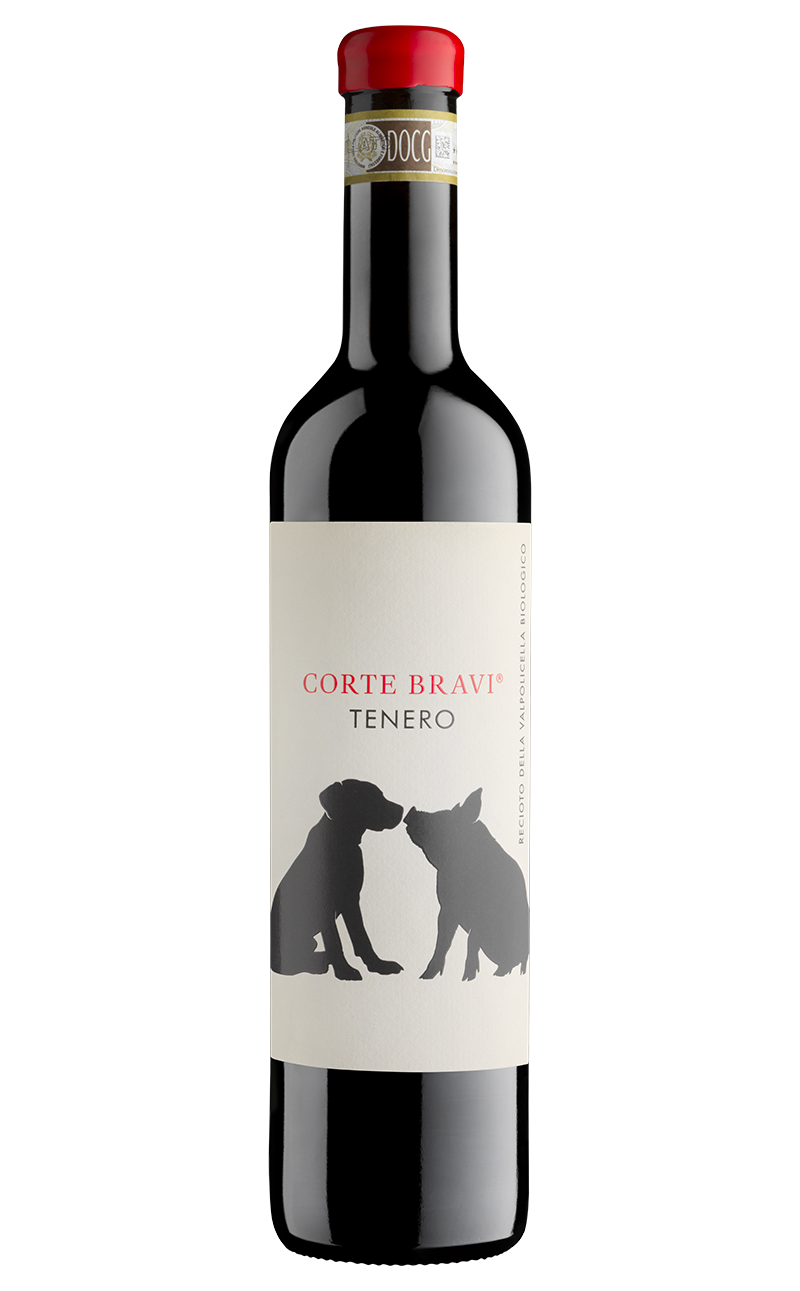
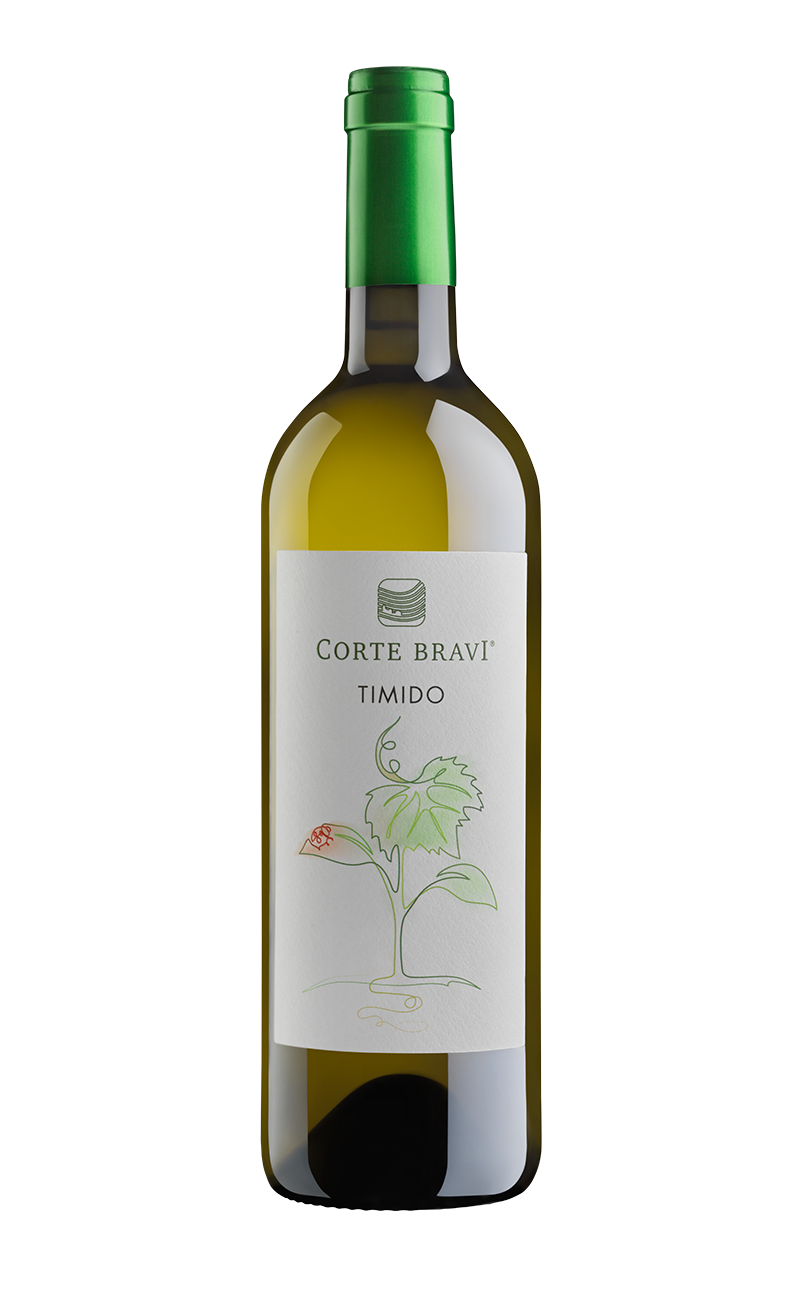
IGT Verona Bianco Biologico
Timido
DownloadWe wanted our white wine, with our red grapes. Here it is! Rondinella and Molinara grapes tentatively pressed.
Classification
IGT Verona Bianco Biologico (Organic)
Vintage
2023
Vineyards
Our own vineyards cultivated with the “pergola Veronese” growing system, with organic methods. Southern exposure.
Age of the vines
20/30 years
Production area
Gargagnago locality, Sant’Ambrogio di Valpolicella (Verona) 200 m a.s.l.
Type of soil
Mainly limestone.
Grapes
50% Rondinella and 50% Molinara
Yeld
90 quintals per hectare. Every 100 kg of grapes produces 45 – 50 litres of wine.
Vinification and aging
The grapes, only red, are harvested by hand and immediately timidly pressed to separate the must from the skins. Hence the name “shy”. The spontaneous fermentation without the use of synthetic chemical additives takes place in small steel tanks. We do a short aging on the fine lees for 5 months before being bottled without filtration and aged for at least 4 months.
Yeasts
Indigenous local yeasts
Filtration
None.
Total sulphites in bottle
< 20mg/lt
Alcohol
12% vol.
Total acidity
5.4 g / l
Residual sugar
0.5 g / l
Ideal pairing
Excellent for many convivial moments, to start a dinner, as an aperitif, with delicate lake fish and fresh cheeses spread on bread
Serving temperature
10-12° C
Organoleptic description
Straw yellow colour with lime green reflections, fresh citrus fruits and meadow flowers on the nose. Dry, mineral and savoury on the palate. Almost tannic, recurrence of citrus aromas and bread crust.
IGT Verona Corvinone Rosato Sparkling Organic
Vivace
DownloadWe were curious to express the Corvinone in purity, pink and sparkling. A kind of game that we wanted to experience, to satisfy its vivacity, its freshness, its enviable desire to always remain a young wine. It’s called Vivace because of its exuberant vitality and a bold versatility in combining it with everything.
Classification
IGT Verona Corvinone Rosato Sparkling Organic
Vintage
2021
Vineyards
Our own vineyards cultivated with the “pergola Veronese” growing system, with organic methods. Southern exposure.
Production area
Gargagnago locality, Sant’Ambrogio di Valpolicella (Verona) 200 m a.s.l.
Type of soil
Mainly limestone.
Grapes
100% Corvinone
Yeld
90 quintals per hectare. Every 100 kg of grapes produces 60 litres of wine.
Vinification and aging
The grapes are only from Corvinone, which, once picked by hand, are immediately softly pressed with a short must-skins contact. They are immediately put to ferment in steel tanks without the use of chemical additives and with only temperature control. The malolactic fermentation is spontaneous. Refinement in steel for at least 6 months follows. Before being bottled without filtration, we add must from dried Corvinone grapes, and then continue its refinement in bottles and obtain a sparkling wine.
Yeasts
Indigenous local yeasts
Filtration
None.
Total sulphites in bottle
No sulphites.
Alcohol
12% vol.
Total acidity
5.2 g / l
Residual sugar
Refermented in the bottle
Ideal pairing
Perfect for an aperitif and easily combined with many dishes, especially summer ones. The ideal is to combine it with a mixed fried fish, but also with a risotto or pasta with garlic oil, fish carpaccio, white meats or fresh cheeses.
Serving temperature
8-10° C
Organoleptic decription
The colour is a pale pink. The nose reveals notes of peach and pink grapefruit, while in the mouth it is fresh, lively but gentle, with good acidity and flavour, balanced, slightly salty with characteristic notes of cherry.
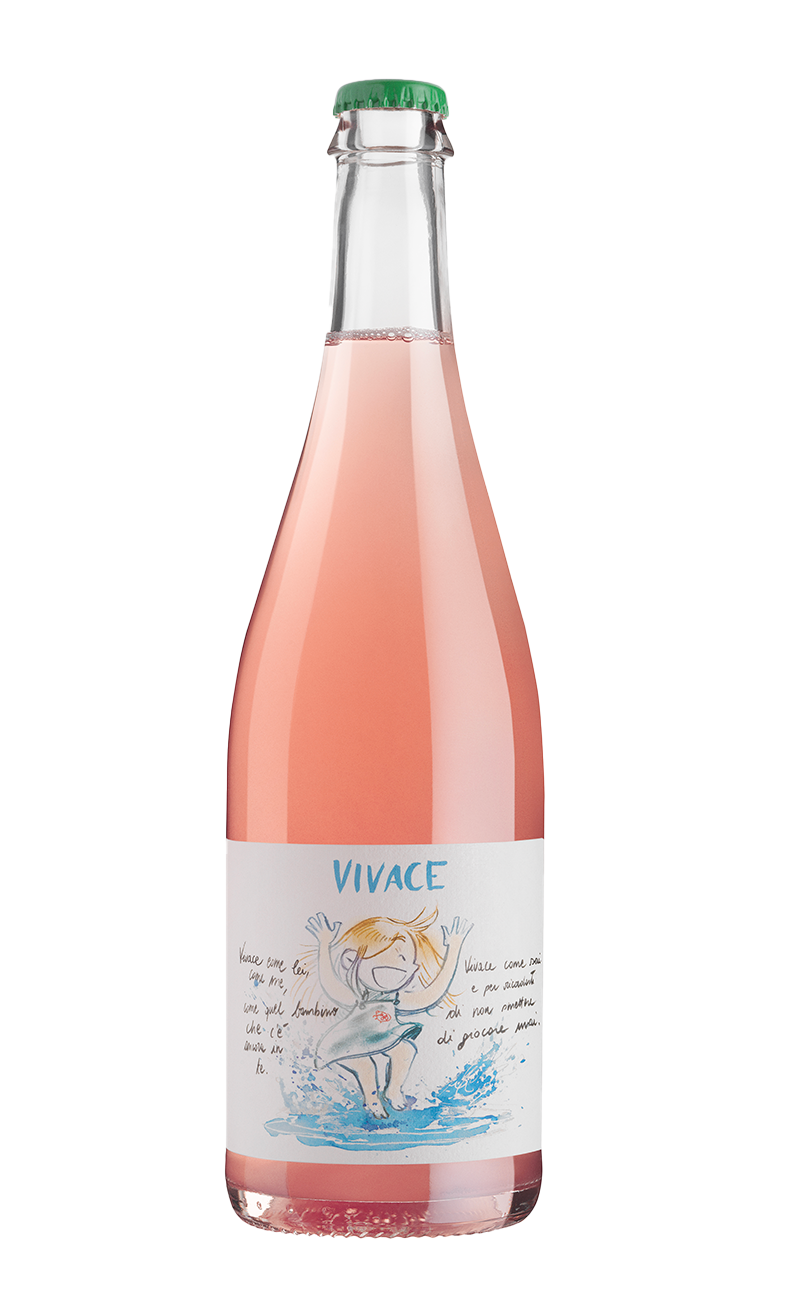
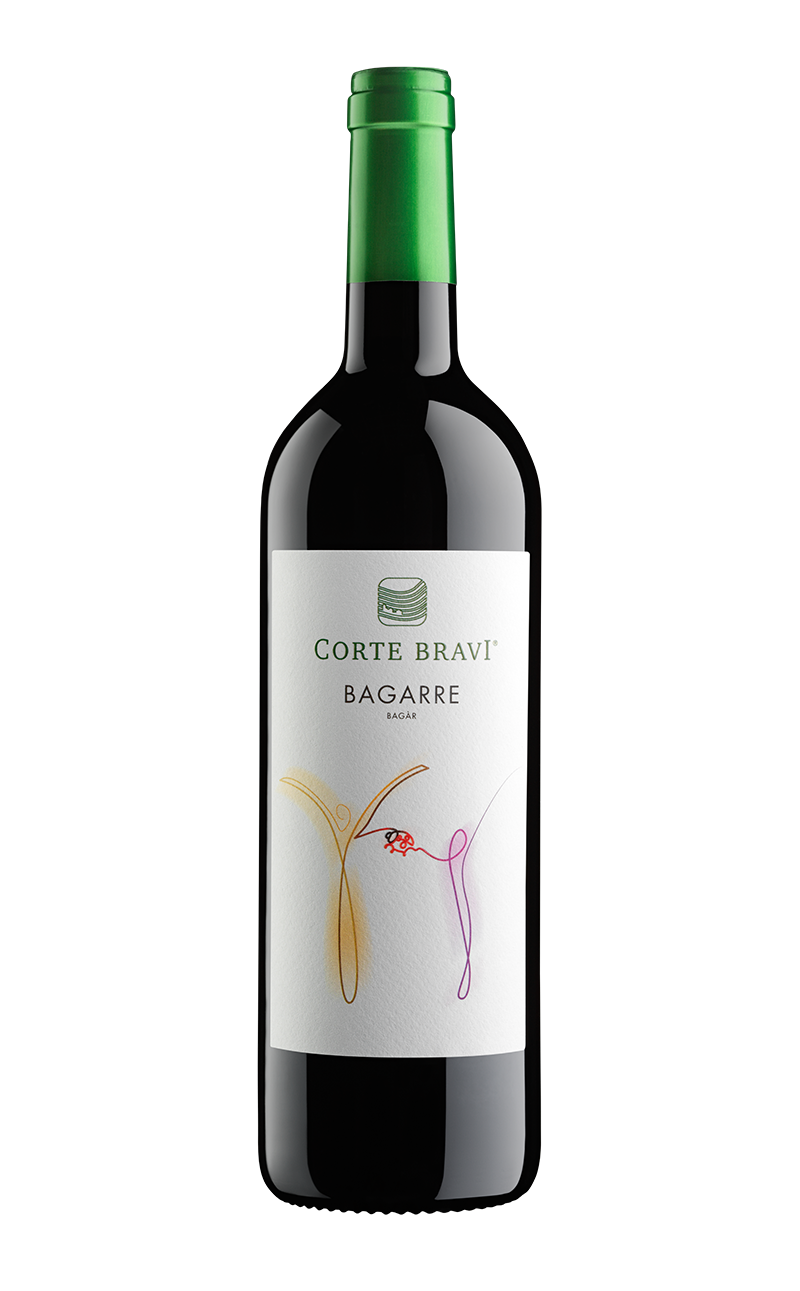
IGT Verona Rosso Biologico (Organic)
Bagarre
DownloadTwo cyclists who create a fight in the middle of the group: Merlot and Cabernet Sauvignon! A decisive, vertical, muscular wine that creates confusion among all our other wines from native grapes.
Classification
IGT Verona Rosso Biologico (Organic)
Vintage
2021
Vineyards
Our own vineyards cultivated with the “pergola Veronese” growing system, with organic methods. Southern exposure.
Age of vines
20 years
Production area
Gargagnago locality, Sant’Ambrogio di Valpolicella (Verona) 200 m a.s.l.
Type of soil
Mainly limestone.
Grapes
Cabernet Sauvignon and 50% Merlot
Yeld
90 quintals per hectare. Every 100 kg of grapes produces 55 – 60 litres of wine.
Vinification and aging
The red grapes are harvested by hand and then put in parts, the Merlot, to dry for a month in boxes until the complete maturation of the Cabernet which is instead left to overripe on the plant. Once pressed together, they are left to cold macerate, and then fermentation starts spontaneously. Subsequently, a second hot maceration takes place, which lasts about a month. Left to rest, half for two years in old American oak barrels and the other half in steel, it is then bottled without any filtration, in order to continue its refinement in the bottle for at least 6 months.
Yeasts
Indigenous local yeasts
Filtration
None.
Total sulphites in bottle
Less than 30 mg/l.
Alcohol
14% vol.
Total acidity
5.5 g / l
Residual sugar
0.9 g / l
Ideal pairing
It goes well with main courses and mixed boiled meats of the Venetian tradition. Ideal with very fatty cured meats such as salami or with cotechino and aged cheeses.
Serving temperature
18° C
Organoleptic description
Intense ruby red colour with dark purple reflections, plum, spices and white chocolate are perceived on the nose. In the mouth the soft tannins and spices stand out, combined with dried plum and licorice tones.
IGT Verona Rosso Biologico (Organic red)
Scatto
DownloadWhen a cyclist sprints uphill and arrives alone, his victory tastes like triumph. Here is the “shot” of the Corvina. One grape, one talent, which knows how to emerge with its own elegance.
Classification
IGT Verona Rosso Biologico (Organic red)
Vintage
2023
Vineyards
Our own vineyards cultivated with the “pergola Veronese” growing system, with organic methods. Southern exposure.
Production area
Gargagnago locality, Sant’Ambrogio di Valpolicella (Verona) 200 m a.s.l.
Type of soil
Mainly limestone.
Grapes
100% Corvina.
Yeld
90 quintals per hectare. Every 100 kg of grapes produces 65 – 70 litres of wine.
Vinification and aging
The grapes, only Corvina, are hand-picked and immediately pressed. Fermentation takes place spontaneously in steel tanks without the use of synthetic chemicals and with only temperature control. The refinement takes place in amphora for at least 5 months and the malolactic fermentation is spontaneous. Bottled without filtration.
Yeasts
Indigenous local yeasts
Filtration
None.
Total sulphites in bottle
Less than 30 mg/l.
Alcohol
13% vol.
Total acidity
5.4 g / l
Residual sugar
0.6 g / l
Ideal pairing
Complete and flexible wine. Perfect with cold meat appetizers, pasta dishes with important sauces and tasty soups, but also pleasant with spit or roast white meats or with semi-aged cheeses.
Serving temperature
10-12° C
Organoleptic decription
Vibrant ruby red colour with scarlet nuances, notes of strawberry and currant are perceived on the nose. In the mouth the red fruits and spices return. The fruit and flavour make it a fresh and crisp wine, “to bite” in pleasant company.
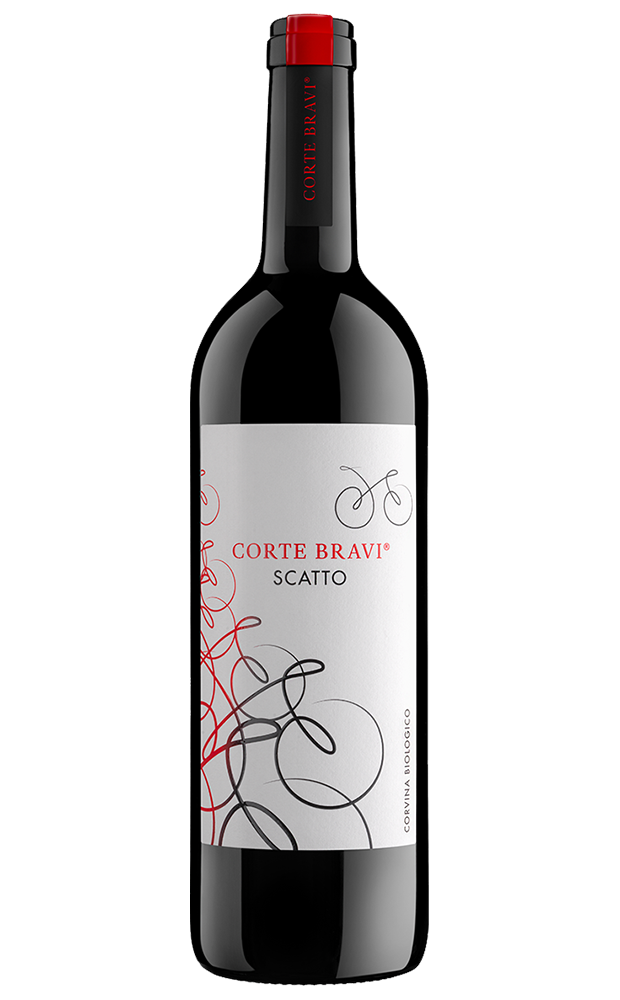
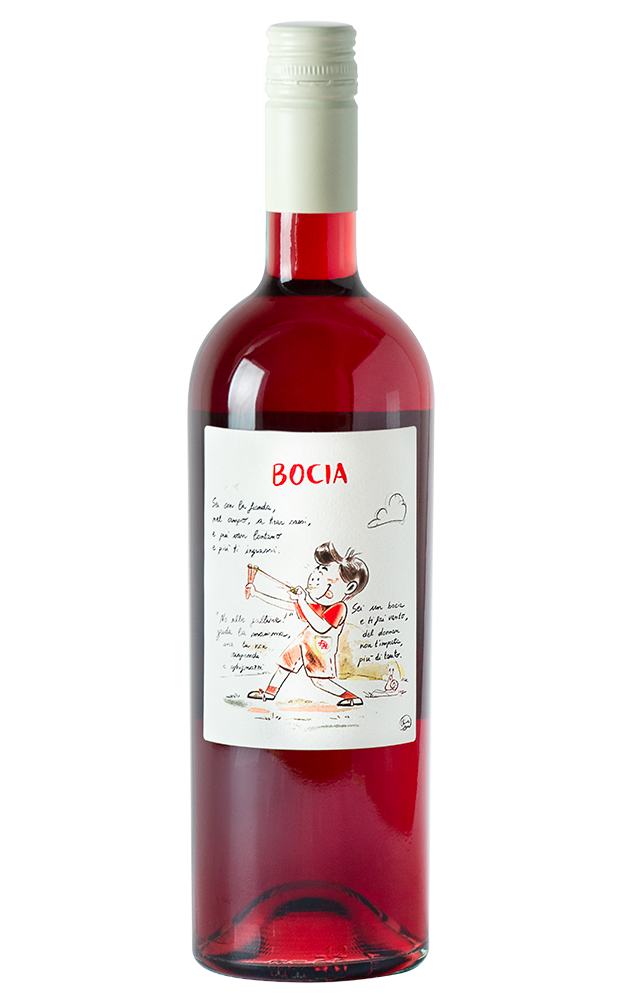
Organic Red Table Wine
Bocia
DownloadA carefree and light wine, which tells you about our origins, the stories of our family, enjoyable episodes and the simple things that made us grow. This is why the “Bocia” is the little boy, it is the image of our father as a child, the last of seven brothers who has always told us his anecdotes and the stories of the village.
Classification
Organic Red Table Wine
Vintage
2021
Vineyards
Owned organically grown with Veronese pergola. Southern exposure.
Age of vines
10/15 years
Production area
Gargagnago locality, Sant’Ambrogio di Valpolicella (Verona) 200 m a.s.l.
Type of soil
Mainly calcareous.
Grapes
100% Rondinella
Yeld
90 quintals per hectare. Every 100 kg of grapes produces 65 – 70 liter of wine.
Vinification and aging
The first ripe bunches of Rondinella are hand-picked and immediately pressed. Fermentation is spontaneous in steel tanks without the use of synthetic chemicals and with only temperature control. Aging in steel for about 2/3 months, spontaneous malolactic fermentation. Bottled without filtration.
Yeasts
Indigenous yeasts
Filtration
None.
Total sulphites in bottle
Less than 30 mg/l.
Alcohol
10% vol.
Total acidity
5.0 g / l
Residual sugar
0.6 g / l
Ideal pairing
It’s the everyday wine, it lends itself to the most varied combinations, whether they are a sandwich with mortadella, or fish, such as a mixed fry, and fatty dishes, such as cotechino(an Emilian pork sausage) or a capon broth.
Serving temperature
10-12° C
Organoleptic description
The colour is bright red. The nose reveals hints of morello cherry, pink pepper and nutmeg. In the mouth it is crunchy, fresh, brings sensations of cherry pulp, it is juicy, slightly astringent, has notes of basil, currant and dog rose.

Profumi e sapori della Valpolicella
Ti aspettiamo nel cuore della Valpolicella
per assaporare i nostri vini.

General Info
Società Agricola Corte Bravi S.S.
Via Case Sparse Vaioi, 8
37015 - Sant’Ambrogio di Valpolicella, VR
P. IVA 04000780231 - REA: VR - 383691
Links
Contacts
info@cortebravi.com
+39 349 0884720
Powered by Be.Family


